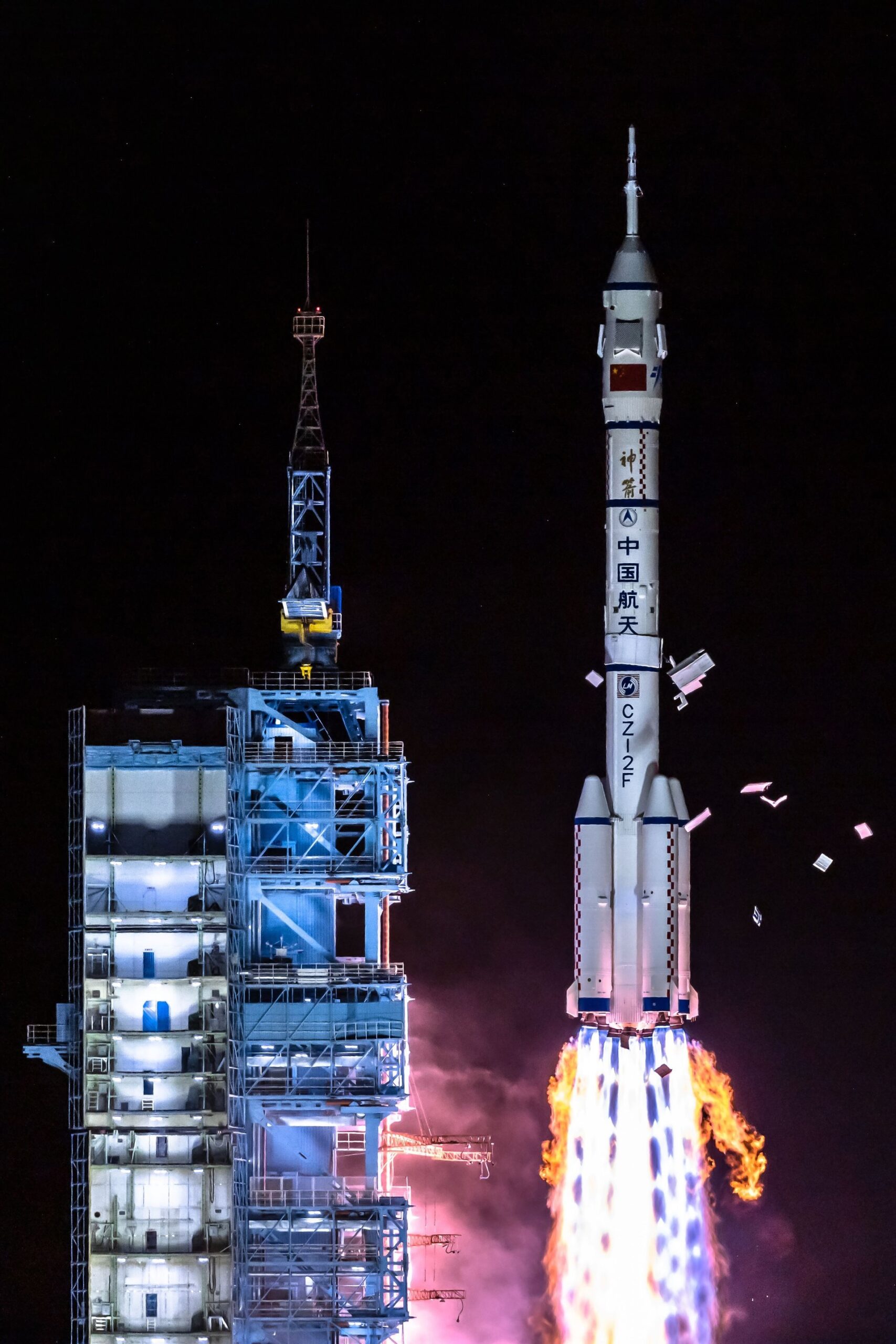While NASA maintains the lead in human space exploration, other nations have already begun their own projects. Take the China National Space Agency for example, with their CLEP, or Chinese Lunar Exploration Program. If you have any doubts about the objectives of the program, just check out their logo: a stylized crescent moon with two footprints in the middle.
The logo is meant to also resemble the Chinese character for “Moon”, which in my opinion is rather clever.
Now as we’ve seen with NASA and Artemis, plans are easy to announce but slightly harder to execute. That said, the Chinese have managed quite a few accomplishments in a short period of time.
On October 24, 2007 the Chinese launched the Chang’e 1 mission, named for the traditional goddess of the moon. This was the first launch of Phase I of the plan, which focused solely on orbital missions. The orbiter was a success, providing a detailed map of the entire lunar surface and doing some long-range scouting for future landing sites.
That missions was followed three years later with the appropriately named Chang’e 2, which did the same thing but in greater detail, then sped off to visit the asteroid 4179 Toutatis to help the agency test its communications and command systems.
In 2013 the Chinese upped the ante with Chang’e 3 (can you sense a pattern here?), which was the first soft landing on the moon achieved by that agency. That mission too was a great success, especially with the deployment of a small rover, Yutu.
In fact, that mission was so successful that it delayed the launch of Chang’e 4 because they wanted to add more capabilities to it. On January 3, 2019 the lander reached the South Pole-Aitken Basin on the far side of the moon, which also carried a rover with it, Yutu-2, the first ever rover to explore the far side.
Next up was Phase III, a pair of robotic sample-return missions. The first of missions was just a test, and the second one, Chang’e 5, launched in November 2020 and returned to Earth with 1,731 grams of lunar soil – the first samples to return to Earth since the Apollo era.
The latest mission is, you guessed it, Chang’e 6, which launched on May 3, 2024. This mission was the whole package: a lander back at the South Pole-Aitken Basin, a successful sample return of more lunar material, and a new rover, the Jinchan, to explore the far side some more, because we just can’t get enough of that farside.
While these are all great successes, they were all uncrewed robotic missions. The next in the series, Chang’e 7 expected to launch in 2026 and Chang’e 8 two years later, will begin to set the stage for human presence, developing a sort of robotic base of landers and rovers, with orbiters monitoring the whole thing and relaying communications back and forth to Earth, to test one of the most important aspects of a future lunar base: ISRU.
ISRU is an acronym that you’ll hear a lot about when it comes to future plans for the Moon, Mars, and beyond, and it stands for in-situ resource utilization. The basic idea is that launching stuff to the Moon is expensive…really expensive. And if we want any sort of base or installation there, it would require an enormous amount of resources like air, water, food, and structures to make it happen. So a cleverer approach is to use lunar soil, or regolith, to fabricate structures and pull out useful resources like water. It’s not like we could just 3D print a lunar base out of regolith, but the more we’re able to use local resources, the better our prospects for future long-term habitation.
After this, things start to get a little fuzzy with the Chinese plans. They have announced that they want to send a human mission to the Moon in 2029 or 2030. The mission will require a much beefier launch vehicle than their current capabilities, named the Long March 10, which is currently in development. Think of it like the Chinese version of the SLS or Atlas V, a single-use vehicle designed to throw as much at the Moon as possible. The current plants for it to be capable of lofting 70 tons into low-Earth orbit and 27 tons towards the Moon.
Even with this kind of lift capacity, however, the hypothetical crewed mission will still require two launches: one for the lander, and another for the spacecraft to
take the crew to the Moon. That crew would land on the surface, spend a few days poking around and looking at rocks (I’m just kidding, they’d be doing some intense flight testing and science), and return. A retread of the Apollo-style missions, for sure, but a retread is better than what we have right now, which is…nothing. So good for them.
All the components of that mission: the spacecraft, the lander, the spacesuits, all of it, are still under active development. Chinese space officials and leaders tend to keep their cards close to their chest, and it’s not like NASA where the budget undergoes regular public reviews. On the other hand, it’s pretty difficult (as in, impossible) to keep launches and space activity secret, so we know when the Chinese are able to accomplish something, but we don’t know if programs are over budget or facing major delays or technical hurdles.
It’s anybody’s guess if that expected launch date of 2029 or 2030 is reliable or not. When it comes to the Chinese, we’ll just have to wait and see.
